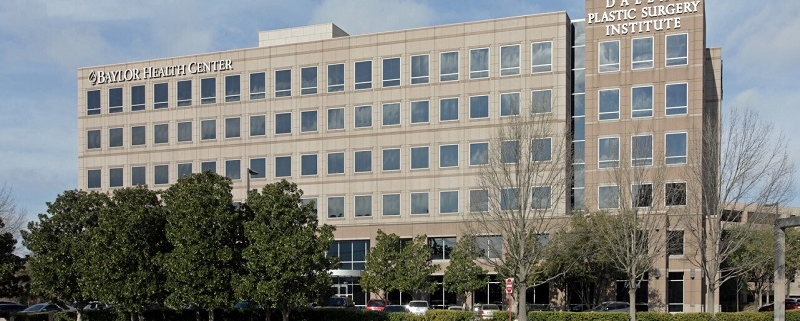In February, work was completed at Methodist Southlake Medical Center, expanding the size of its emergency room to 10,000 square feet, providing a larger waiting room and enhanced diagnostic capabilities for patients.
Ground broke in November 2021 on the hospital expansion before opening its first phase in September 2022 and finishing renovations in February 2023. The expansion includes new capabilities to treat abdominal pain, chest pain and infection as well as enhance the stabilization of patients.
“The expansion of services is part of the hospital’s efforts in becoming a full-service, acute care hospital,” said Methodist Southlake President Benson Chacko. “Having the emergency room with our certified emergency physicians that can handle pediatric and adult care gives an opportunity for us to take care of our community.”
This change in care capabilities also comes as the Tarrant County area sees growth in its population. The county is expected to reach over 2.6 million residents in 2040—a 23% increase from 2020’s population, according to the Texas Demographic Center.
As the population grows along the Hwy. 114 corridor, Chacko said making sure the hospital has access points for existing and projected patients is important. Since being acquired by Methodist Health System in 2016, the hospital now has a cardiology program with the capability for inpatient cardiac procedures, and it has capabilities for nuclear medicine as well as obstetrics and gynecology care.
After the first phase of expansion in September, which increased the emergency department’s beds from three to eight, he said there has been “tremendous growth” in the number of patients coming in.
“As we continue to grow in the community, families are starting to see that Methodist Southlake is not the same hospital that it was just two years ago,” Chacko said. “It’s the real deal.”
As of February, the emergency department now has 12 beds, with 54 beds total available throughout the hospital.
New Opportunities For Care
The expansion of a private business, such as Methodist Southlake, will help serve the rising population, according to Southlake Chamber of Commerce CEO Mark Guilbert.
“As the area grows, additional services are needed,” Guilbert said. “For Methodist to bring them here is indicative of our thriving economy.”
Methodist Southlake has also provided a new option for residents when choosing medical care. Previously, he said residents would have to leave Southlake to go to an emergency room.
Increasing care capabilities is not only a focus for Methodist Southlake, but Baylor Scott & White Medical Center in Grapevine. Baylor Grapevine’s President Naman Mahajan said hospital expansions mean providing better access and availability of medical technology closer to home.
“It is important for patients to have access to technology, such as robot-assisted surgery, that was previously only available in medical centers in downtown Dallas or Fort Worth,” Mahajan said. “Over the next five years, we’re going to be dealing with a lot more individuals and community members that are over the age of 65. With that, it really comes down to two things—access and availability.”
He said Baylor Grapevine is aiming to become a tertiary level center, meaning it has a full component of services it can offer to the community. When a population is significantly growing, he said it is important to provide care for heart disease, stroke and neurological services.
“As the community grows, each health care system and entity is having to look at how they are going to best serve,” Mahajan said. “It is also a goal that community members should not have to leave our area to receive that world-class care.”
Bearing The Load
With an increase in patients, Chacko said Methodist Southlake has hired more medical personnel during the last 18 months. The hospital has brought in more nurses, respiratory therapists and different specialists. Despite bringing on more staff, there are still industry-wide staffing issues the hospital is facing.
“When the COVID-19 pandemic began, several hospital members left and became agency employees through private companies or independent contractors,” Chacko said.
Baylor Grapevine also saw nurses leave when the pandemic began, but Mahajan said nurses are returning to the workforce in a more permanent way, rather than being travel nurses.
Texas is projected to face a shortage of nurses through 2030, according to a study by the Health Professions Resource Center and the Texas Center for Nursing Workforce. North Texas is expected to see the biggest shortage across the state with 15,688 registered nurses needed by 2030. The Gulf Coast follows in second with a projected shortage of 13,877.
East Texas, South Texas and West Texas are expected to be short 5,000 to 6,000 nurses in each region. Central Texas and the Rio Grande Valley are each projected to have shortages between 6,000 and 7,500. The Panhandle is expected to have the smallest shortage of 355 registered nurses, according to the study.
“Growth in the community is going to increase the workload of local hospitals,” said Jack Frazee, director of government affairs and general counsel for the Texas Nurses Association. “We don’t have the ability to move excess nurses from one part of the state to another. We’re always struggling to keep up with the demand, and population growth is a big part of that.”
Listening to nurses is one step for hospitals to retain their staff, Frazee said. Under state law, hospitals are required to set up a nurse staffing committee to ensure positive patient outcomes and nurse satisfaction. He said working with the committee and making sure the policies set in place by the hospital support nurses is “critical” for retention.
The Texas Legislature is aware of issues with staffing nurses, Frazee said. The problem is being addressed by proposed bills which will increase the funding for education. While this is a step in the right direction, Frazee said funding solutions take time.
“There’s going to be a big burden on the hospital management to make sure that they are doing what they need to do internally to retain nurses and make sure that we’re not losing qualified nurses,” Frazee said. “Without these reforms though, staffing nurses will remain difficult. Training new nurses will help meet the demand seen across the state.”
Promoting health care as a profession can also be done by local hospitals.
“Baylor Grapevine is helping by providing tuition assistance to nursing students and other efforts,” Mahajan said. “So while we do know our population is going to grow … we anticipate that, and we have several strategies underway that will allow us to continue to expand our workforce to meet the COVID-19 health care needs.”
Source: Dallas-Fort Worth Community Impact




